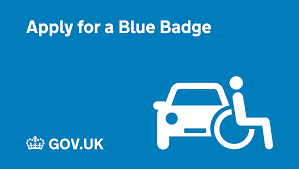
1. Consult Your Healthcare Professional
Before applying for a Blue Badge, it’s crucial to discuss your fibromyalgia diagnosis with your healthcare professional. They can provide essential medical evidence and support your application, highlighting how the condition impacts your mobility and daily life.
2. Gather Comprehensive Documentation
Compile all necessary documents, including medical reports, doctor’s notes, and any relevant test results, showcasing the severity and impact of fibromyalgia on your mobility. Thorough documentation will strengthen your case during the application process.
3. Understand Eligibility Criteria
Familiarize yourself with the Blue Badge eligibility criteria in the UK. While fibromyalgia is a recognized condition for Blue Badge consideration, each case is assessed individually based on the applicant’s mobility needs.
4. Describe Your Challenges
When filling out the application, provide a detailed description of how fibromyalgia affects your daily life and mobility. Explain the difficulties you face when walking, standing, or using public transport, and how these challenges restrict your independence.
5. Be Specific About Triggers
Describe any specific triggers or factors that worsen your symptoms, such as fatigue, pain flare-ups, or environmental conditions. Understanding your condition comprehensively will aid in justifying the necessity of the Blue Badge for you.
6. Utilize Supporting Testimonies
If possible, gather testimonies from family, friends, or colleagues who have witnessed how fibromyalgia impacts your mobility. These firsthand accounts can provide valuable insights into your condition and its effects on your daily life.
7. Be Persistent and Patient
The Blue Badge application process can be lengthy and require patience. Be prepared for potential delays or requests for additional information. Stay persistent and follow up on your application if necessary.
8. Seek Guidance from Support Groups
Join fibromyalgia support groups or disability organizations to connect with others who have obtained a Blue Badge. Their experiences and advice can offer valuable tips and insights to navigate the process successfully.
9. Appeal if Necessary
If your initial application is declined, don’t lose hope. You have the right to appeal the decision and provide further evidence to support your case. Seek guidance from advocacy organizations or local authorities to understand the appeals process.
10. Stay Updated on Regulations
Keep abreast of any changes or updates to the Blue Badge scheme and eligibility criteria. Staying informed ensures that you have the most current information when applying for or renewing your Blue Badge.
Remember, the Blue Badge is designed to improve accessibility and independence for individuals facing mobility challenges. If you genuinely need the support it provides due to fibromyalgia, diligently follow the application process, and advocate for yourself to increase your chances of obtaining the badge and enjoying the benefits it offers.
